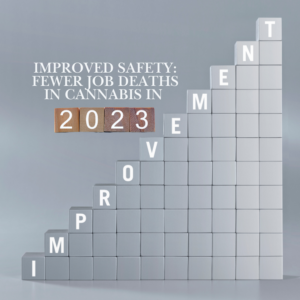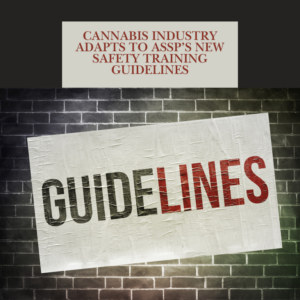Exploring OSHA’s Potential Shifts Under New Leadership

With new leadership at the helm, the Occupational Safety and Health Administration (OSHA) may be on the cusp of significant policy and regulatory changes. OSHA plays a vital role in ensuring safe and healthy workplaces for millions of American workers, and shifts in its leadership often signal changes in priorities, policies, and enforcement strategies. This article explores what potential changes OSHA may undertake, the implications for industries and employers, and what businesses can do to prepare for the evolving regulatory landscape.
Introduction to OSHA’s Role and Mission
OSHA, a branch of the U.S. Department of Labor, was established in 1970 to enforce workplace safety and health standards. Its core mission is to prevent work-related injuries, illnesses, and fatalities by enforcing regulations, providing training, and advocating for safe working environments. OSHA’s actions affect a vast array of industries, from manufacturing and construction to healthcare and retail, making it a critical agency for businesses nationwide. Each new leadership brings an opportunity to shift OSHA’s focus, priorities, and policies, which directly impacts workplace practices across the country.
Recent Developments and New Leadership Vision
As OSHA transitions under new leadership, various stakeholders are eager to see what direction the agency will take. New leadership can bring a fresh perspective, and historically, shifts in OSHA’s priorities have been influenced by the administration’s stance on labor, safety, and health issues. The new OSHA administration may take a more assertive stance on certain regulatory measures or pursue innovative strategies in training, compliance, and inspections.
Key areas where OSHA’s approach may change include:
Revised standards for high-risk industries
Enhanced focus on emerging risks such as those posed by technology
Greater emphasis on worker mental health and well-being
By identifying these potential shifts, businesses can better anticipate how OSHA’s evolving policies may affect their operations.
Focus on Emerging Health and Safety Risks
Workplace hazards are continually evolving, particularly as industries adopt new technologies and as new health issues, such as workplace stress and mental health concerns, gain attention. Under new leadership, OSHA may prioritize emerging risks that have traditionally received less attention.
Mental Health in the Workplace: Recent years have seen growing recognition of mental health as a vital aspect of worker safety. New OSHA leadership may initiate guidelines or partnerships focused on addressing mental health risks, including stress, burnout, and workplace bullying.
Technological Hazards: As workplaces integrate more technology, including automation and artificial intelligence, new risks arise. OSHA may seek to address these emerging hazards through updated guidelines or standards related to machine safety, ergonomics, and digital health monitoring.
This shift in focus would align OSHA’s efforts with the evolving nature of work and the new risks facing American workers.
Enhanced Regulatory Standards and Enforcement
Historically, OSHA has adopted a mix of voluntary guidelines and mandatory regulations to encourage workplace safety. However, under new leadership, OSHA may implement stricter enforcement and tougher penalties for violations in industries that are high-risk or have high rates of non-compliance. This shift could mean:
Increased Inspections: OSHA may prioritize inspections in industries with high injury rates, such as construction, manufacturing, and healthcare.
Higher Penalties for Violations: With an emphasis on compliance, OSHA might increase penalties for businesses that fail to meet safety standards. This could involve larger fines and more stringent enforcement of repeat violations.
Targeted Safety Programs: OSHA could expand targeted programs like the Severe Violator Enforcement Program (SVEP), which focuses on employers who willfully disregard safety regulations.
These potential changes would serve as a reminder for businesses in high-risk industries to review their compliance programs and enhance their safety practices.
Strengthening Whistleblower Protections
Another area where OSHA’s new leadership might enact changes is whistleblower protections. OSHA is responsible for enforcing whistleblower statutes in over 20 federal laws, protecting employees who report safety violations from retaliation. The new administration could strengthen these protections, making it easier for employees to report unsafe conditions without fear of repercussions.
Potential changes could include:
Expanded Training for Employers: OSHA may offer additional training for employers on handling whistleblower complaints and fostering open communication about safety issues.
Enhanced Retaliation Investigations: More resources may be allocated to investigating cases of alleged retaliation, providing greater protections for workers who raise safety concerns.
Quicker Response Times: OSHA could prioritize faster processing times for whistleblower complaints, ensuring that cases are resolved promptly.
Strengthening these protections aligns with OSHA’s mission to create safe and open workplaces, enabling workers to report potential hazards without risking their jobs.
Increasing Support for Small and Medium-Sized Businesses
Small and medium-sized businesses often face unique challenges in meeting OSHA’s safety standards due to limited resources. New OSHA leadership may increase support to help these businesses comply with regulations through enhanced training, partnerships, and outreach programs.
On-Site Consultation Programs: OSHA currently offers a free consultation program for small businesses, and expanding this program could help more companies receive customized advice and improve their safety protocols.
Industry-Specific Guidelines: By providing more industry-specific guidelines, OSHA could help smaller businesses in sectors such as retail, hospitality, and small-scale manufacturing understand and meet regulatory requirements.
Incentives for Compliance: OSHA might explore creating incentives, such as reduced penalties for minor first-time violations, to encourage small businesses to comply with safety regulations.
These changes could make it easier for small and medium-sized businesses to improve workplace safety while managing costs effectively.
Prioritizing Worker Training and Education
Worker training is a critical component of workplace safety, and OSHA has long provided training resources through its outreach programs. Under new leadership, OSHA may increase its emphasis on education and workforce training to address high-risk activities and emerging hazards.
New Training Programs: OSHA may develop new educational initiatives focused on emerging industries, including cannabis, technology, and renewable energy, which have unique health and safety considerations.
Increased Funding for Training Grants: OSHA could expand its training grants, enabling more businesses to access essential safety training for employees.
Digital Training Resources: The agency might prioritize developing online courses and digital training materials to improve accessibility for businesses of all sizes.
By investing in worker education, OSHA would empower workers to understand and manage risks, reducing incidents and improving compliance across industries.
Expanding Partnerships with State and Local Governments
OSHA works closely with state and local governments to enforce workplace safety laws and provide resources. Under new leadership, the agency may prioritize partnerships with local governments, especially in states with high injury rates or unique workplace risks.
Collaborative Inspections and Audits: OSHA could partner with state and local agencies to conduct joint inspections in high-risk sectors, pooling resources for greater impact.
Community Outreach: OSHA might engage in more outreach with local communities to improve public awareness of workplace safety standards and worker rights.
Grant Programs for Local Governments: By funding state and local programs that align with federal priorities, OSHA could support tailored safety initiatives that address regional issues effectively.
These partnerships would amplify OSHA’s impact and create safer workplaces by leveraging the resources and knowledge of local governments.
Addressing Equity and Safety in Vulnerable Worker Populations
Workers in high-risk and low-wage industries, as well as vulnerable populations such as immigrant and temporary workers, often face increased health and safety risks. OSHA’s new leadership may focus on equity by ensuring that all workers, regardless of industry or status, have access to safe working conditions.
Enhanced Protections for Vulnerable Workers: OSHA may increase inspections and enforcement efforts in industries with vulnerable worker populations, such as agriculture, construction, and food processing.
Language and Cultural Outreach: OSHA could expand outreach and educational materials in multiple languages and engage community leaders to ensure that information reaches non-English-speaking workers.
Workforce Equity Initiatives: OSHA might prioritize initiatives to support safer work environments for vulnerable and marginalized worker groups, creating a more equitable workforce.
This focus on equity would align with broader national initiatives to create fairer workplaces and address disparities in workplace safety across demographics.
What Businesses Can Do to Prepare for Potential OSHA Shifts
With the potential shifts in OSHA’s focus and policies, it’s important for businesses to take proactive steps to remain compliant and enhance workplace safety. Here are some recommendations:
Conduct a Compliance Review: Evaluate current safety practices and identify areas for improvement to ensure alignment with OSHA standards.
Invest in Training: Provide updated safety training for all employees, focusing on emerging risks and compliance standards.
Establish Open Communication: Foster an environment where employees feel comfortable reporting hazards, supporting transparency and adherence to safety protocols.
Stay Informed: Regularly monitor updates from OSHA and other regulatory agencies to stay ahead of potential changes and avoid compliance issues.
OSHA’s new leadership is likely to bring changes that affect a broad spectrum of industries. By addressing emerging risks, strengthening protections, and expanding support, OSHA aims to create safer workplaces in an evolving economic landscape. Businesses that proactively adopt best practices in workplace safety and remain vigilant about compliance will be better positioned to navigate these changes successfully, fostering a culture of safety and responsibility.











